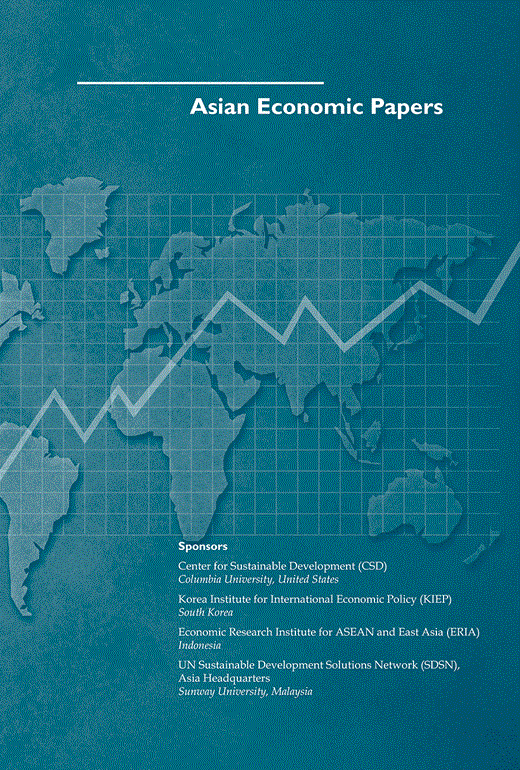评论和讨论
IF 5.3
3区 经济学
Q1 ECONOMICS
引用次数: 0
摘要
Willim Poole:Mislikin的论文对有效市场理论进行了深入的研究,并就其对宏观模型和货币政策的影响提出了许多有用的想法。他的实证结果复制并扩展了以前关于有效市场的工作。他的工作认真细致。据我阅读这篇论文所知,他在处理数据和统计分析时非常谨慎。米什金的实证工作只揭示了一个难题。在方程29中,当他将持有普通股的回报率回归到三个月国库券利率时,他发现了一个负系数,而不是该理论预测的正系数。当然,有效市场模型预测,除了风险和流动性溢价导致的回报差异外,所有资产的回报都应该相等;但米什金的等式得出的结果是,当国债利率高时,股票的预期回报率就很低。为了理解这个等式,假设账单利率相对较高,为8%。以十进制表示的季度票据回报率为0.02。0.02倍于约-5.0的回归系数的票据率为-0.10。再加上方程中的常数项0.08,持有普通股的季度预期回报率为-0.02,即每年-8%。同样,当票据利率相对较低时,比如每年4%或每季度0.01,普通股的预期回报率为每季度0.03或按年利率计算为12%。令人困惑的是,当收益率为正的国库券总是可以持有时,普通股的预期回报率是如何为负的。对这一结果的可能解释取决于交易成本的存在。显示账单费率的时间序列变化本文章由计算机程序翻译,如有差异,请以英文原文为准。
Comments and Discussion
Willim Poole: Mislikin's paper provides a thorough examination of efficient-markets theory and many useful ideas on its implications for macro models and monetary policy. His empirical results replicate and extend previous work on efficient markets. His work is careful and thorough. As far as I can see from reading the paper, he has been extremely careful in his treatment of the data and in his statistical analysis. Mishkin's empirical work uncovers only one puzzle. In equation 29, when he regresses the return from holding common stocks on the threemonth treasury bill rate, he finds a negative coefficient rather than the positive one predicted by the theory. The efficient-markets model, of course, predicts that, except for differences in returns due to risk and liquidity premiums, returns should be equalized on all assets; but Mishkin's equation comes up with the result that when the treasury bill rate is high, the rate of return expected on stocks is low. To understand that equation, suppose that the bill rate is relatively high at 8 percent. The quarterly rate of return on bills in decimal form is then 0.02. A bill rate of 0.02 times the regression coefficient of about -5.0 is -0.10. Add to this figure the constant term in the equation of 0.08, and a per quarter expected return is obtained from holding common stocks of -0.02, or -8 percent per year. Similarly, when the bill rate is relatively low-say 4 percent per year or 0.01 per quarter-the expected return on common stock is 0.03 per quarter or 12 percent at an annual rate. The puzzle is how the expected return on common stocks can be negative when treasury bills earing a positive rate of return can always be held. A possible explanation for this result depends on the existence of transactions costs. The time series of changes in the bill rate displays
求助全文
通过发布文献求助,成功后即可免费获取论文全文。
去求助
来源期刊

Asian Economic Papers
ECONOMICS-
CiteScore
7.50
自引率
0.00%
发文量
16
期刊介绍:
The journal Asian Economic Papers (AEP) is supported by several prominent institutions, including the Center for Sustainable Development at Columbia University in the United States. This shows that there is a strong emphasis on sustainable development within the journal's scope. Additionally, the Korea Institute for International Economic Policy in South Korea, the UN Sustainable Development Solutions Network (SDSN) in Malaysia, and the Economic Research Institute for ASEAN and East Asia in Indonesia also sponsor AEP. The articles published in AEP focus on conducting thorough and rigorous analyses of significant economic issues pertaining to specific Asian economies or the broader Asian region. The aim is to gain a deeper understanding of these issues and provide innovative solutions. By offering creative solutions to economic challenges, AEP contributes to the discourse and policymaking that impact the Asian economies and region as a whole.
 求助内容:
求助内容: 应助结果提醒方式:
应助结果提醒方式:


